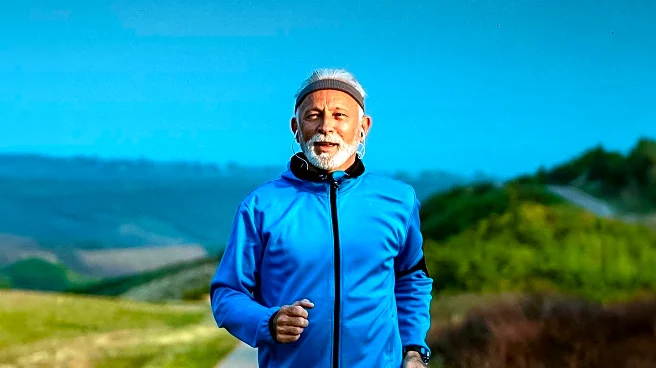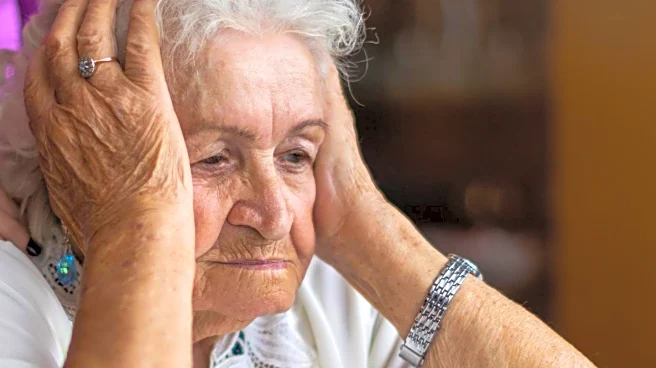What is the story about?
What's Happening?
The 30-second sit-to-stand test is gaining popularity as a simple method to assess healthspan and longevity. This test involves standing, lowering oneself to a chair or the floor, and standing up again without using hands or arms for support. It is used by physical therapists and doctors to evaluate agility, flexibility, and core strength, particularly in older adults. Research indicates that the test can predict mortality risk and functional mobility, with lower scores suggesting a higher risk of falls. The test is also seen as a way to gauge hip flexor mobility and strength, which are crucial for preventing injuries and maintaining independence.
Why It's Important?
The sit-to-stand test offers a practical tool for assessing physical health, particularly in aging populations. Its ability to predict fall risk and mortality makes it a valuable resource for healthcare providers and individuals seeking to maintain mobility and independence. The test's simplicity and accessibility allow it to be used widely, promoting awareness of physical fitness and encouraging proactive health measures. This development is significant for public health, as it highlights the importance of maintaining strength and flexibility to enhance quality of life and reduce healthcare costs associated with falls and mobility issues.
What's Next?
As the test gains traction, it may become a standard part of health assessments for older adults. Healthcare providers might incorporate it into routine check-ups to monitor patients' physical capabilities and recommend exercises to improve scores. Public health campaigns could promote the test as a preventive measure, encouraging individuals to engage in activities that enhance strength and flexibility. Further research may explore the test's applicability to different age groups and its potential to predict other health outcomes.
Beyond the Headlines
The test raises questions about the broader implications of physical fitness on longevity and quality of life. It highlights the need for accessible and effective health assessments that can be easily integrated into daily routines. The focus on hip flexor mobility and strength underscores the importance of targeted exercises in maintaining overall health. This development may also influence cultural attitudes towards aging, emphasizing the role of physical activity in extending healthspan.
AI Generated Content
Do you find this article useful?













